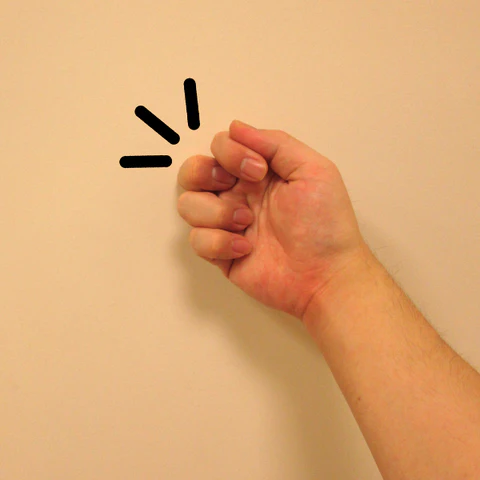How to Tell If a Wall Is Hollow | Simple Detection Tips

- Info and Tips
How to find out if walls are hollow?
Before you hang shelves, drill holes, or start a renovation, it’s important to know what kind of wall you’re dealing with.
Is it hollow or solid? Many people skip this step and end up with broken tools—or worse, damage they didn’t see coming. If you’re unsure, don’t worry. There are simple ways to figure it out without tearing anything apart.
This guide will walk you through it, step by step.

Image Source: Character
Tap the Wall and Listen
One of the easiest ways to tell if a wall is hollow is by tapping on it with your knuckles or a small tool like the handle of a screwdriver. When you tap, pay attention to the sound it makes.
A hollow wall will usually produce a lighter, echo-like sound because there’s an air gap behind the surface. On the other hand, a solid wall, like one made of brick or concrete, will sound dull, flat, and dense. This method isn’t perfect, but it gives you a quick first clue.
Try tapping in a few different spots along the wall. If the sound changes from solid to hollow, that could also mean there are studs behind the drywall or a mix of materials. It’s a simple trick, but it works well for a quick check.
Use a Stud Finder
If you want a more accurate way to check if a wall is hollow, a stud finder can help. This handheld tool is designed to detect changes in density behind the wall surface.
When you slide it along the wall, it can show you where the wooden or metal studs are. If it finds studs spaced evenly apart—usually 16 to 24 inches—it’s likely you’re dealing with a hollow wall made of drywall or plaster over a frame.
Some stud finders also detect electrical wires, which is an added safety bonus, especially if you plan on drilling. Using a stud finder gives you a clear idea of what’s behind the wall without damaging anything.
It’s a great step if you want to be sure before hanging something heavy or starting any type of home improvement project.
Measure the Wall Thickness
Another way to figure out if a wall is hollow is by checking how thick it is. The best place to do this is around door or window frames, where the edge of the wall is visible.
If the wall is relatively thin—around 4 to 5 inches thick—it’s probably a standard stud wall with drywall or plasterboard over a wooden or metal frame. This usually means it’s hollow inside, with space between the studs.
But if the wall is much thicker—around 10 inches or more—it might be a solid wall, possibly made of brick, concrete, or another dense material. Thicker walls can also mean a double-layered wall with a cavity in between, often found in older or well-insulated homes.
Measuring wall thickness won’t give you a full picture on its own, but it’s a helpful clue when combined with other checks like tapping or using a stud finder.
Look at Floor Joists for Clues
If you have access to a basement, attic, or crawl space, checking the direction of the floor joists can help you figure out what kind of wall you’re dealing with. Floor joists are the horizontal beams that support the floors above.
In most homes, solid or load-bearing walls run perpendicular to the floor joists, meaning they cut across them. These walls are often built to carry weight from above and are usually more solid in construction.
Hollow walls, especially non-load-bearing ones, tend to run parallel with the joists. These are more likely to be made of lighter materials like drywall over a wooden frame.
This method isn’t about measuring or using tools—it’s about understanding the structure of your home. Knowing which way the joists run can give you useful insight before you make any big changes to a wall.
Check for Nails, Screws, or Dimples
Another simple way to get clues about a wall’s structure is by looking closely at its surface. Use a flashlight and shine it at an angle across the wall.
What you’re looking for are small bumps, dimples, or tiny circles that show where nails or screws were driven in. These fasteners usually attach drywall to studs behind the wall, which is a strong sign that the wall is hollow.
If you spot a regular pattern of these marks—typically every 16 or 24 inches apart—it likely means the wall is made of drywall over a wooden or metal frame.
These marks might also be slightly raised or sunken, depending on how the wall was finished. This is an easy and non-invasive way to learn more about your wall without using tools or making holes.
Review Original Blueprints or Building Plans
If you have access to your home’s original blueprints or building plans, they can be a reliable source of information about wall construction.
These documents often show which walls are load-bearing, how thick each wall is, and what materials were used during construction. They may also label cavity walls, solid walls, or walls framed with studs.
Blueprints are especially helpful if you’re unsure whether a wall is safe to cut into or modify. Even if your home has been renovated over time, the original plans can still give you a basic idea of how the structure was built.
If you don’t have a copy, you may be able to request it from your local city or county building department. Reviewing these plans takes the guesswork out of the process and helps you make smarter, safer choices.
Drill a Small Test Hole (With Caution)
If you’re still unsure whether a wall is hollow or solid, drilling a small hole can give you a direct answer—but it should be done carefully. Use a thin drill bit and slowly drill into the wall in a discreet spot, like behind a piece of furniture or near a baseboard.
If the drill bit quickly passes through and feels like it’s hitting air or nothing at all, the wall is likely hollow. If you hit something solid almost right away, it’s probably a solid wall made of brick, concrete, or dense plaster.
Before drilling, always use a stud finder or a voltage detector to check for electrical wires or plumbing. You don’t want to accidentally hit something dangerous.
This method should be your last step, and only if other methods haven’t given you a clear answer. Done safely, it’s a sure way to confirm what’s behind your walls.
Conclusion
Figuring out whether a wall is hollow doesn’t have to be complicated. With a few simple methods—like tapping, using a stud finder, checking joists, or reviewing blueprints—you can get a clear idea without tearing anything apart.
And if you’re still unsure, a careful test hole can give you a definite answer. Just take your time, be safe, and always check for wiring first. Knowing your wall’s structure can save you from costly mistakes later.
FAQs
How can I tell if a wall is hollow?
One of the easiest ways to find out is by drilling a small hole. If you feel steady resistance all the way through, it’s probably a solid wall. If there’s some resistance at first and then the drill moves freely, that means the wall is likely hollow inside, like a stud wall with space between supports.
How do I know if my wall is solid or has a cavity?
You can measure the thickness of your wall near a door or window. If the wall is more than 260mm (about 10 inches) thick, it’s probably a cavity wall, which has a gap between two layers. If it’s thinner, it’s likely a solid wall with no gap inside.
What is a hollow wall?
The term “hollow wall” can mean different things depending on where you are. In the UK, it usually refers to a wall with an air gap between two layers of brick or block—this is also called a cavity wall. In the US, “hollow wall” often means a wall made of plasterboard or drywall attached to wooden or metal studs, with empty space inside.
How can I check what type of wall I have?
A quick trick is to press a pushpin or thumbtack into the wall. If it goes in easily, your wall is likely drywall. If it’s tough and doesn’t go in at all, the wall might be plaster. You can also look at the wall’s surface and edges near switches or damage to get clues about the material.